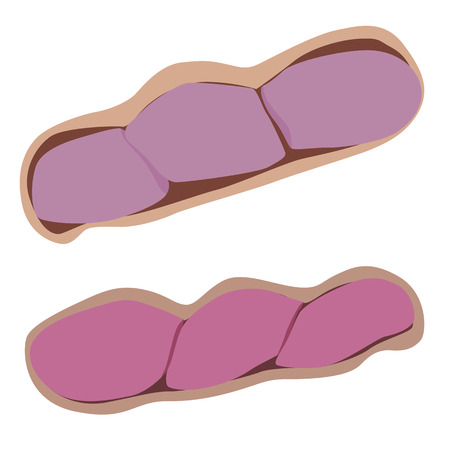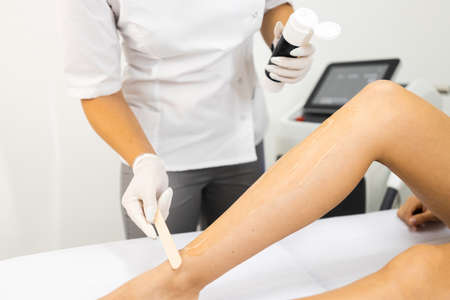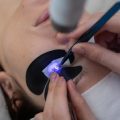1. Understanding CO2 Lasers: Fractional vs Traditional
When it comes to advanced skin rejuvenation, CO2 laser resurfacing is often hailed as a gold standard for tackling wrinkles, scarring, and uneven texture. But did you know there are two key types of CO2 lasers – fractional and traditional? Both harness the transformative power of carbon dioxide laser technology, yet they deliver very different experiences and results. Let’s take a closer look at the science behind each approach. Traditional CO2 lasers work by removing the entire outer layer of damaged skin in a continuous sweep, which triggers your body’s natural healing response and encourages the production of fresh collagen. This full-field treatment can lead to dramatic improvements but also comes with longer recovery times and more noticeable downtime. In contrast, fractional CO2 lasers take a more refined approach. Instead of treating the whole surface, these clever devices deliver precise columns of laser energy in a grid-like pattern, leaving areas of untouched skin in between. This means your skin heals faster, as healthy tissue helps repair treated zones more quickly, all while still stimulating deep renewal beneath the surface. The difference between these two techniques lies not just in their technology but also in their suitability for different lifestyles and skin concerns—a crucial point to consider when deciding which option is best for your own beauty journey.
2. Personal Experiences: The Feel of Each Treatment
Having personally experienced both fractional and traditional CO2 laser treatments here in the UK, I can honestly say that each comes with its own unique sensations and nuances. The classic CO2 laser is renowned for its intensity; during the procedure, you can expect a warm, prickling sensation—almost like a strong sunburn combined with tiny pinpricks. It’s certainly not a walk in the park, even with numbing cream or local anaesthetic, but it’s over before you know it. Afterwards, the skin feels hot and tight, and there’s usually noticeable redness and swelling for several days. For me, the initial discomfort faded into a raw tenderness, much like post-peel sensitivity, and I needed to be especially gentle while cleansing or applying aftercare products.
The fractional CO2 laser, on the other hand, was a more refined experience. The treatment itself felt less intense: instead of a widespread burning sensation, there were fleeting zaps across targeted areas—like being flicked lightly with elastic bands. While still uncomfortable at times, it was noticeably more manageable than the traditional method. Post-treatment, my skin looked dotted and flushed but didn’t feel nearly as sore or exposed. Recovery was swifter too; by day three or four, most of the redness had settled, and I could confidently pop out for a coffee without feeling self-conscious—a definite win if you’re keen on keeping up appearances in your daily London routine.
| Treatment Type | Sensations During | Immediate After-Effects | Recovery Experience | Day-to-Day Impact |
|---|---|---|---|---|
| Traditional CO2 Laser | Intense heat, prickling Numbing required |
Redness, swelling Raw skin feel |
7-14 days downtime Peeling & tenderness |
Time off work recommended Visible healing signs |
| Fractional CO2 Laser | Mild to moderate discomfort Pinpoint zaps |
Dotty redness Less swelling |
3-7 days recovery Quicker skin renewal |
Minimal disruption Back to normal sooner |
If you’re considering which option might fit into your lifestyle here in Britain—where unpredictable weather and bustling schedules are the norm—it’s worth weighing up your tolerance for downtime versus your expectations for dramatic results. Personally, I found that each treatment brought its own sense of anticipation and satisfaction, but knowing what to expect day-to-day made all the difference in choosing what worked best for my routine and confidence.

3. Results & Aesthetic Outcomes
When it comes to the visible transformations brought about by fractional and traditional CO2 lasers, the differences truly come to life on one’s skin. Both treatments can dramatically improve texture, clarity, and that much-coveted healthy glow, but they do so in subtly distinct ways. I recall my own first encounter with a traditional CO2 laser – the sensation was rather intense, and the aftermath left my complexion looking somewhat raw for a good week or two. However, once the healing period passed, my skin’s surface felt remarkably smoother, almost like running your fingers across polished glass. Sun spots faded, and fine lines were visibly reduced, gifting me a fresh sense of confidence.
On the other hand, when I later experienced a fractional CO2 session, the downtime was noticeably shorter and far less dramatic. There were tiny pinprick marks for several days, but no major peeling or redness lingered. The results unfolded more gradually; after a fortnight, my friends began to compliment the newfound luminosity of my complexion. My pores appeared tighter, and the overall tone looked more even—subtle enhancements that added up to a dewy finish with less disruption to daily life.
Many in the UK favour the understated yet effective approach of fractional lasers for their gentle touch and swift recovery—a perfect fit for those balancing busy schedules or simply preferring not to draw attention during healing. Yet, if you’re seeking a more profound transformation—say, erasing years of sun damage or deeper wrinkles—the traditional CO2 option remains unmatched in its dramatic ability to renew and revive tired skin.
The Beauty is in the Details
Whichever path you choose, both lasers offer impressive improvements in skin clarity and radiance. It all comes down to your personal comfort with downtime versus your desire for visible results. Personally, I relish how each experience left me feeling more confident stepping out bare-faced—and there’s something wonderfully freeing about that natural glow catching the light on a classic British morning stroll.
4. Downtime and Aftercare in a British Context
If you’re considering either fractional or traditional CO2 laser resurfacing, understanding the downtime and aftercare is essential—especially with the quirks of British weather and lifestyle. Recovery isn’t just about what’s happening on your skin, but also how you adapt it to daily life in the UK, from navigating unpredictable rain to dealing with the dry air of central heating.
Realistic Recovery Times: What to Expect
| Treatment Type | Typical Downtime | Visible Redness/Peeling |
|---|---|---|
| Fractional CO2 Laser | 3-7 days | Mild to moderate (like a sunburn) |
| Traditional CO2 Laser | 7-14 days (sometimes longer) | More intense, with scabbing and peeling |
While fractional lasers offer a quicker return to normal activities (think popping down to Tesco or catching up at work), traditional CO2 requires more patience. You might need to plan some time off work, particularly if you work in customer-facing roles where appearance matters.
Aftercare Tips for British Living
- Weather Watch: The UK’s notorious drizzle can be both friend and foe—humidity soothes, but rainwater isn’t sterile. Use an umbrella and avoid getting your face wet in polluted city showers.
- Central Heating Woes: Indoor heating dries out healing skin fast. A gentle humidifier or bowls of water by radiators can help maintain moisture in your bedroom or lounge.
- Sunscreen Still Matters: Even when skies are grey, UV rays sneak through. Opt for a broad-spectrum SPF 30+ as part of your post-laser routine all year round.
- Public Transport Caution: If you commute on the Tube or buses, wear a scarf or mask to protect sensitive skin from pollution and germs during peak recovery days.
- No Rush to the Pub: Socialising is tempting, but stick to low-key meet-ups until redness subsides—cosy up with a cuppa at home instead of braving busy beer gardens too soon.
Returning to Work and Everyday Life
The British workplace is famously practical—many colleagues will understand medical leave, especially for procedures advised by dermatologists. If you’re working remotely (a common post-pandemic perk), you may find it easier to keep up with tasks while recovering discreetly. For those heading back into city offices, lightweight mineral makeup can help cover lingering redness once your practitioner gives the green light. Remember, patience is key; allow yourself time for proper healing before returning fully to high-paced routines or major social engagements.
5. Suitability: Which Option Fits Your Skin Type and Lifestyle?
When it comes to choosing between fractional and traditional CO2 lasers, understanding your unique skin type, lifestyle needs, and personal expectations is absolutely essential. Fractional CO2 lasers tend to be the go-to for those with lighter skin tones (Fitzpatrick I–III), mild to moderate textural concerns, or anyone wary of prolonged downtime. Their gentler approach means less risk of pigmentation issues—especially important for us Brits who might want to be back at work or socialising swiftly after treatment.
Traditional CO2 lasers, by contrast, are often favoured for deeper wrinkles, more pronounced scarring, or severe sun damage—think of them as the heavy-hitters of skin resurfacing. However, these treatments come hand-in-hand with more significant recovery time. If you’re juggling a hectic schedule (school runs, meetings, weekend getaways to the countryside), this extended downtime may not suit your routine.
Budget also plays its part. While fractional treatments can require multiple sessions (which adds up over time), traditional CO2 is typically a one-off investment—but do factor in the cost of post-procedure care and potential time off work.
If you have darker skin tones or are prone to hyperpigmentation—a common worry here in the UK given our wonderfully diverse population—fractional treatments are usually safer. But always consult a qualified practitioner who understands the nuances of British skin types and lifestyles.
In summary, consider what matters most: rapid recovery for a busy diary, deeper results for stubborn issues, or a balanced approach that fits seamlessly into your day-to-day life. A personalised consultation remains the best way forward, ensuring your chosen laser treatment aligns perfectly with both your complexion and calendar.
Weighing Up Costs and Accessibility in the UK
If you’re considering fractional or traditional CO2 laser resurfacing, it’s essential to look beyond the clinical benefits and think about the practicalities—namely, how much you’ll pay and where you can access these treatments here in the UK. Let’s break down what you need to know before booking your consultation.
Average Prices: What Should You Expect?
When it comes to cost, there’s a noticeable difference between fractional and traditional CO2 laser treatments. On average, fractional CO2 laser sessions in reputable private clinics across London, Manchester, and other major cities tend to start from around £500–£800 per session for smaller areas (like under-eyes or around the mouth). Full-face treatments typically range from £1,200 up to £2,500 per session. Traditional CO2 lasers, which are more intense and require longer downtime, are less commonly offered but may cost similarly or slightly more due to the expertise required for safe application and aftercare.
Where to Find These Treatments Across the UK
You’ll find both types of CO2 laser resurfacing available in many private dermatology clinics and medical aesthetic practices throughout the UK. Major cities like London, Birmingham, Edinburgh, and Bristol have a selection of clinics with experienced practitioners and state-of-the-art equipment. It’s always worth checking reviews and qualifications—look for practitioners registered with bodies like the British Association of Dermatologists or the Care Quality Commission.
NHS Versus Private Clinics: Is There a Choice?
While the NHS does offer some dermatological procedures, cosmetic skin resurfacing—whether fractional or traditional—is generally not covered unless it’s deemed medically necessary (for example, treating severe scarring following an accident or surgery). For most people seeking skin rejuvenation or anti-ageing benefits, private clinics are the go-to option. The upside is that private clinics often provide a broader range of technologies and customisable treatment plans; the downside is that you’ll need to budget accordingly, as treatments are self-funded.
To sum up: Fractional CO2 lasers tend to be more widely available, with variable pricing depending on location and provider experience. Traditional CO2 lasers remain niche but accessible if you seek out specialist clinics. Whichever route you choose, investing time in research—and perhaps even attending a few consultations—will help ensure your skin resurfacing journey feels both accessible and rewarding here in the UK.


